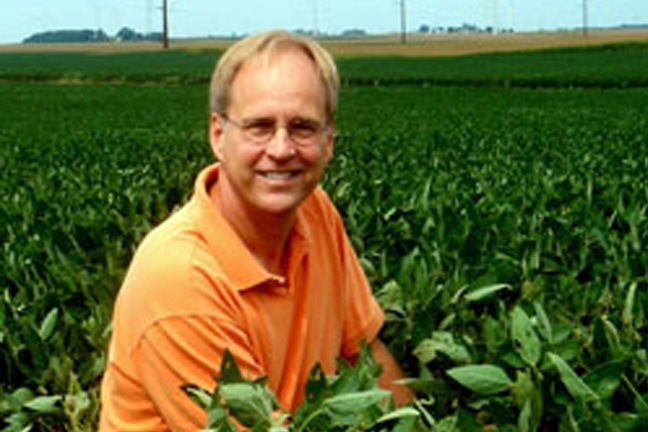
Agricultural News
Conservation Compliance v. Conservation Incentives--A False Choice?
Tue, 06 Mar 2012 16:16:33 CST

"I appreciate Secretary Vilsack's support of conservation incentives, but I believe that he has created a false choice between incentive-driven conservation and conservation compliance," said Jon Scholl, President of American Farmland Trust (AFT). "Conservation compliance is nothing more than an incentive for farmers with highly sensitive lands to follow a few basic conservation practices. When I talk to farmers, they recognize that conservation compliance is crucial for the long-term health of our soil."
Put in place in the 1985 Farm Bill, conservation compliance is a set of minimum conservation standards that farmers with sensitive lands must follow in order to receive federal farm subsidies. Compliance helps reduce erosion and protect our productive soils on the farmland that is most vulnerable to erosion, while also protecting wetlands. No farmer is required to follow conservation compliance, but if a farmer is not in compliance, USDA will temporarily withhold certain benefits-including commodity, disaster, and conservation payments and loans-until the farmer comes back into compliance.
Currently, compliance requirements do not attach to the federal insurance premium support that farmers receive when they purchase crop insurance. Compliance was attached to crop insurance subsidies in 1985, but was later removed in 1996 to help encourage producers to purchase crop insurance. Today, program participation is not an issue, with over 80 percent of commodity farmers signed up. As crop insurance becomes the centerpiece of the farm safety net going forward, and direct payments go away, farmers will have much less of an incentive to follow conservation compliance.
"This is a critical juncture for U.S. agriculture," added Scholl. "We have a choice in this farm bill between moving forward and falling backward, and for the good of agriculture and our key natural resources, we must move forward. The conservation compliance system works, and it should be attached to the core of the farm support system, regardless of whether that's a traditional commodity program, a revenue program, or crop insurance. This is just a basic accountability measure."
Conservation compliance has contributed 40 percent of the erosion reduction on our most vulnerable land since 1982, saving at least 295 million tons of soil per year. With demand for agriculture production doubling by 2050 to meet the needs of a growing world population, we cannot afford to lose our precious soil.
In addition, compliance has greatly reduced conversion of ecologically important wetlands on farms, preserving the critical benefits they provide for flood protection, nutrient filtering and wildlife habitat.
"Despite what you may have heard, attaching compliance to the crop insurance premium support would have a pretty minimal impact back on the farm," Scholl continued. "Farmers across the United States would still be able to buy crop insurance and get operating loans from their bank. Anyone out of compliance simply wouldn't receive the crop insurance premium support until they come back into compliance. NRCS and FSA would still do compliance checks using the same system we have in place now, and crop insurance agents would not have an additional enforcement role."
Data from the USDA Economic Research Service show that the vast majority of farmers who purchase crop insurance are already covered by compliance because of the commodity, conservation, disaster, and loan programs that they participate in. This is true for 95 percent of wheat production, 98 percent of corn and soybean production, and over 99 percent of cotton and rice production. This means that applying conservation compliance to crop insurance would affect less than 5 percent of commodity production in this country. Moreover, since compliance provisions only apply to roughly 25 percent ofU.S. cropland, the real effect on farmers would be even smaller than these numbers indicate.
"So let's do the right thing, reattach compliance to crop insurance, and keep this basic incentive for farmers to follow minimum conservation standards on vulnerable soils and wetlands," adds Scholl. "It will keep our conservation system incentive-based and help us all in the long run."
WebReadyTM Powered by WireReady® NSI
Top Agricultural News
More Headlines...




















